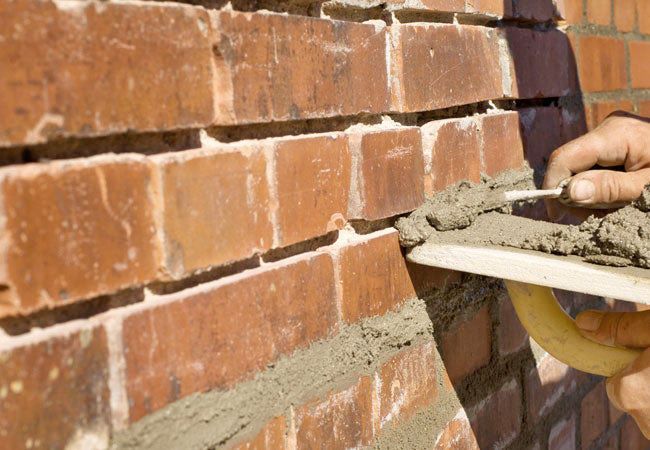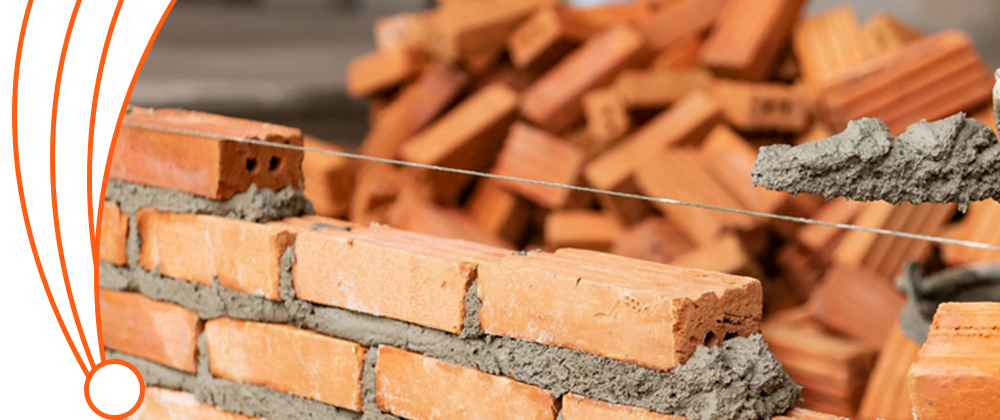If you’ve ever seen a brick wall that’s starting to show its age, you may have noticed small cracks or gaps between the bricks. This is called mortar joint deterioration, and it’s caused by a variety of factors like weathering, water damage, and ground movement. Left unaddressed, mortar joint deterioration can lead to serious structural problems.
Tuck pointing is a masonry repair technique that’s used to restore the strength and stability of deteriorating mortar joints. In this guide, we’ll cover everything you need to know about tuckpointing, including what it is, why it’s important, and what is the purpose of tuck pointing.
Table of Contents
What is Tuckpointing?
Tuckpointing is the process of removing damaged or lose mortar from between bricks and replacing it with new mortar. This helps to stabilize the structure and prevent further damage. Use tuckpointing most often on older buildings because the original mortar contains lime, which breaks down over time. However, also use tuckpointing on newer buildings where the mortar joints are damaged or deteriorating.
Types of tuckpointing
There are two main types of tuck pointing:
- Partial depth tucking
- Full-depth tucking
Partial depth tucking only replaces the surface layer of mortar, while full depth tucking removes all of the damaged mortar and replaces it with new mortar. Partial Partial-depth is less invasive than full-depth tucking and can be done without dismantling the entire structure. However,
What is the purpose of Tuck Pointing?
Tuck pointing is an old-school masonry method that has a lot of benefits. The purpose behind this is to update your walls and give them a fresh appearance. The process involves using mortar to fill in the joints between bricks. This gives the brickwork a finished look and helps to waterproof the bricks. Hire a professional to do this work to ensure it is done correctly and the results are long-lasting.
What is the Difference Between Tuck Pointing and Repointing?
The type of mortar used distinguishes tuckpointing from repointing. Tuckpointing uses a stronger, more durable mortar, while repointing uses a softer mortar that you can easily remove and replace.
Tuckpointing is a method of masonry repair that involves filling in the cracks and gaps between bricks with a strong, durable mortar. This method is often used on older buildings where the bricks are starting to show signs of wear and tear. Repointing, on the other hand, is a method of masonry repair that involves replacing the soft mortar between bricks with a new, softer mortar. Use this method often on newer buildings where the bricks are still in good condition but the mortar has worn down over time.
How to Prepare for a Tuck Pointing Job
- If you’re planning to have tuck pointing work done on your home, there are a few things you can do to prepare for the job. First, it’s important to have a clear understanding of what is tuck pointing and what it involves. This old-school masonry technique consists of repairing or filling in cracks and joints in brickwork using a special type of mortar.
- To prepare for a tuck pointing job, first clean the area and remove any debris. Next, identify the type of mortar you will use for the repair. Use either lime-based or cement-based mortar in tuck pointing. Select the type that best suits your needs because each has advantages and disadvantages.
- Once you’ve selected the right type of mortar, you’ll need to mix it according to the manufacturer’s instructions. Once you mix it, apply it to the cracks and joints needing repair. Usually, you do this with a special trowel specifically designed for tuck pointing work.
- After you apply the mortar, let it cure for some time before completing the tuck pointing job. The curing process can take anywhere from a few days to several weeks, depending on the weather conditions and other factors. Once the mortar has cured completely, you can enjoy your newly repaired brick.
How to Tuck Point Bricks
If you have an older home with brick walls, you may need to tuck point the bricks at some point. Tuckpointing is a process of repairing mortar between the bricks. Over time, the mortar can crack and crumble, allowing water to seep in and cause damage to the bricks.
To tuck point bricks, you will need:
- A bucket of water
- Mortar mix
- A trowel
- A putty knife
- A wire brush
- A chisel (optional)
How to repair cracked mortar between bricks
Start by wetting down the area that you will be working on. This will help to prevent the mortar from drying out too quickly.
- Next, mix up a batch of mortar mix according to the manufacturer’s instructions.
- Use your trowel to apply the mortar mix into the cracks between the bricks.
- Use your putty knife to smooth out the surface of the mortar.
- Before moving on, give the mortar 24 hours to dry.
- Once the mortar is dry, use your wire brush to remove any excess from the cracks between the bricks.
- finally, chisel out any remaining old mortar (optional).
Tips and Tricks When Working with Brick and Mortar
If you’re working with brick and mortar, there are a few tips and tricks that can make your life easier. First, when mixing mortar, be sure to add enough water so that the mixture is the consistency of peanut butter. Too much water will make the mortar too soupy and difficult to work with, while not enough water will make it too dry and crumbly.
Second, when applying mortar to bricks, use a stiff brush to push the mortar into the joints between the bricks. You want to fill the joints, but avoid getting mortar on the faces of the bricks themselves.
Finally, once you’ve applied the mortar, use a damp rag to smooth it out and remove any excess. Allow the mortar to dry for at least 24 hours before continuing with your project.
Hiring a Professional
When it comes to tuckpointing, there are two main options: do-it-yourself (DIY) or hiring a professional. Both solutions have advantages and disadvantages, so it’s crucial to thoroughly consider your options before choosing one.
Hiring a professional tuck pointer can be more expensive than doing it yourself, but it’s also likely to result in a better overall finished product. Professional tuck pointers have the experience and expertise to get the job done right, and they also have access to the best tools and materials. If you’re not sure whether you want to tackle the job yourself or hire a professional, we suggest talking to a few different contractors to get an idea of what they would charge for the job.
Conclusion
Tuck pointing is an essential part of the building, whether you’re doing a small repair or a full-scale home renovation. With this guide and the right tools, supplies, and know-how, you too can learn how to tuck point like a pro! Whether your project requires traditional masonry techniques or more advanced methods with today’s modern mortar compounds and specialized tools, learning the basics of tuckpointing will arm you with the information required to give any job an eye-catching finish that lasts for years.
FAQs
Q: What is tuck pointing and why is it necessary?
A: Tuck pointing involves removing damaged mortar and replacing it to restore stability and appearance. It prevents further deterioration and structural issues.
Q: What types of mortar do you use in tuck pointing?
A: Tuck pointing typically uses lime-based or cement-based mortar. The choice depends on the specific needs and characteristics of the brickwork.
Q: How often do you need to perform tuck pointing?
A: You need to perform tuck pointing when mortar joints show significant wear or damage, usually every 20-30 years depending on environmental conditions.
Q: Can you perform tuck pointing on newer buildings?
A: Yes, you can perform tuck pointing on newer buildings if the mortar joints are damaged or deteriorating, though it’s more common in older structures.
Q: What is the difference between tuck pointing and repointing?
A: Tuck pointing uses a stronger, more durable mortar, whereas repointing uses a softer mortar that is easier to replace when needed.



